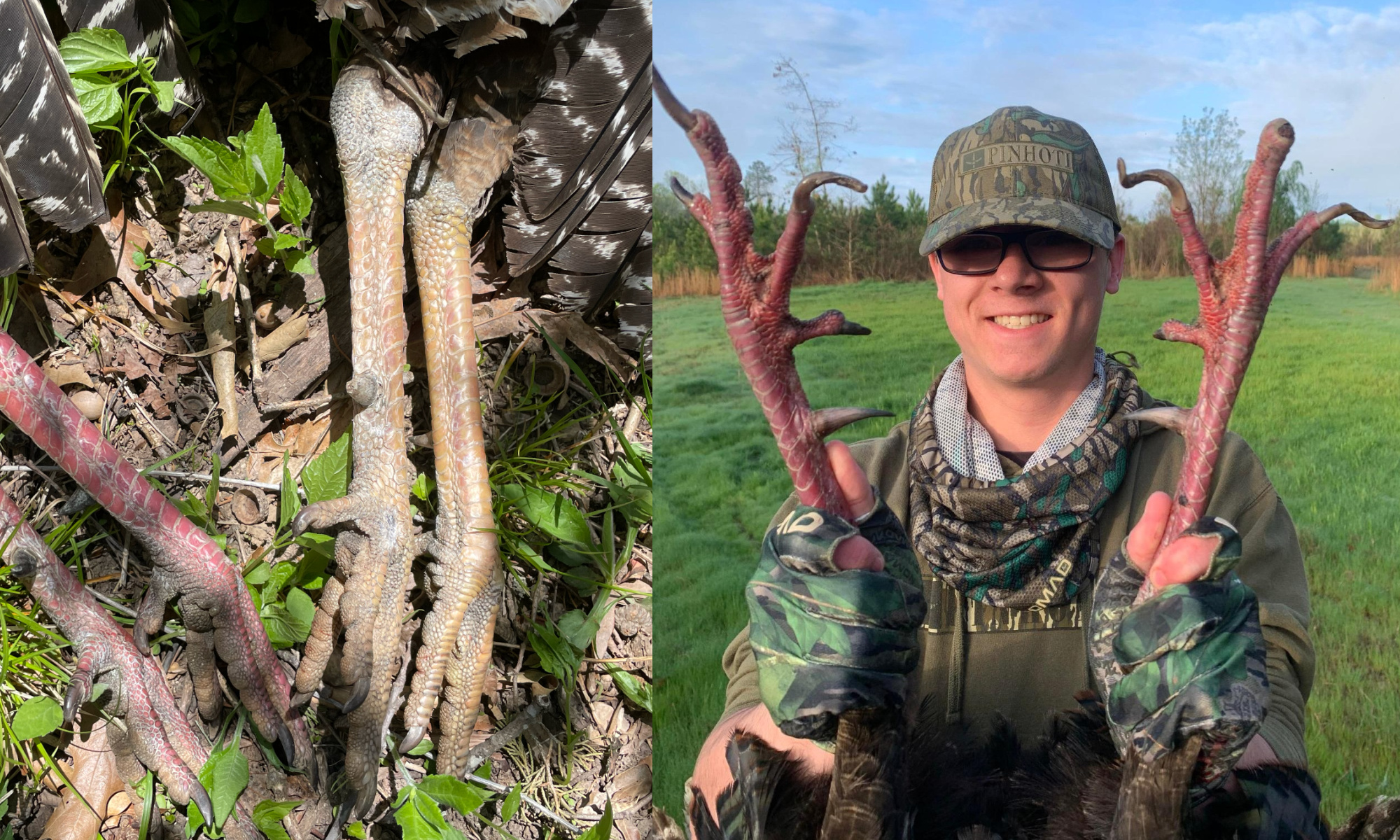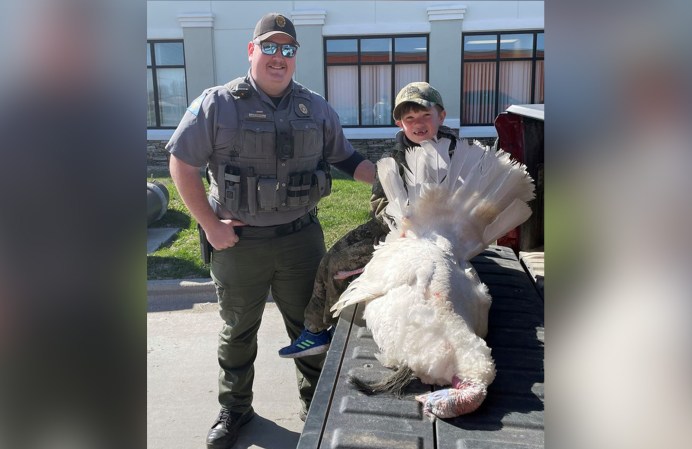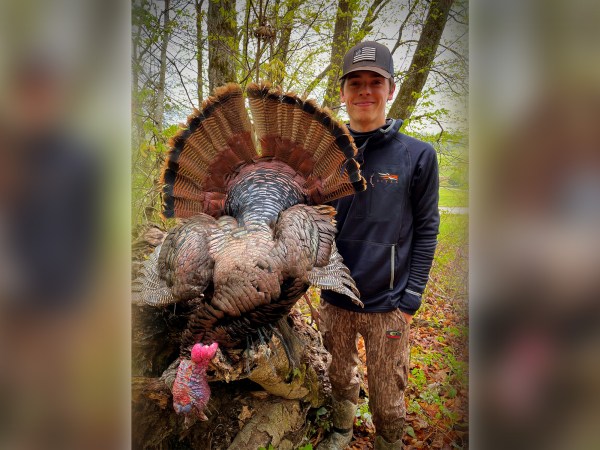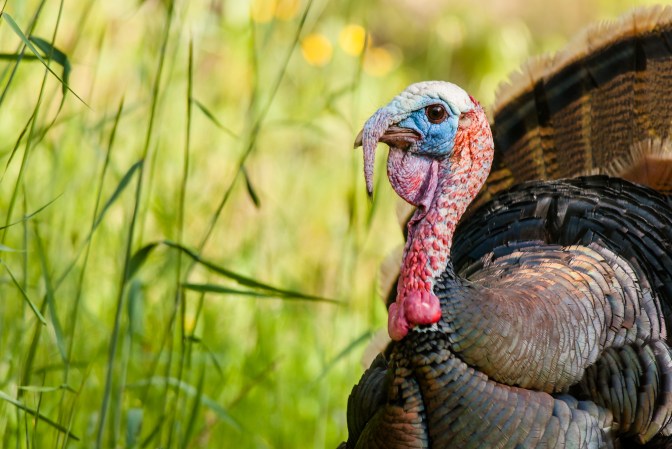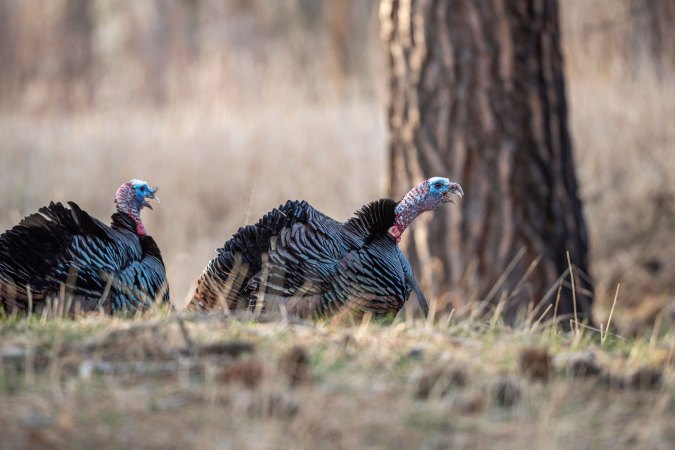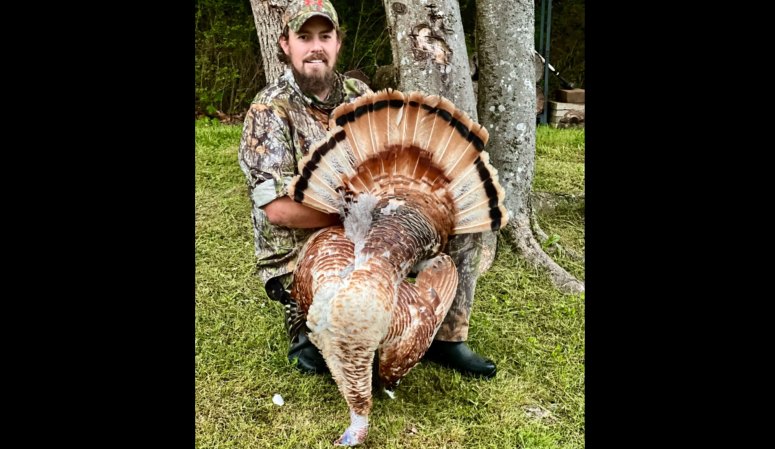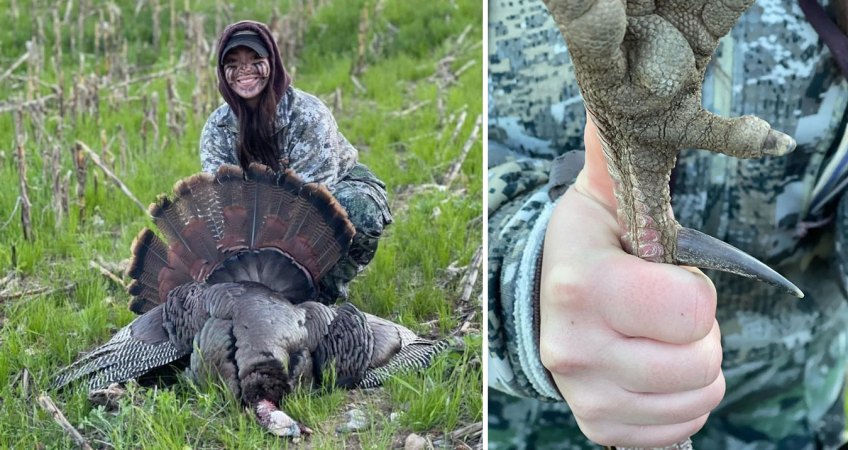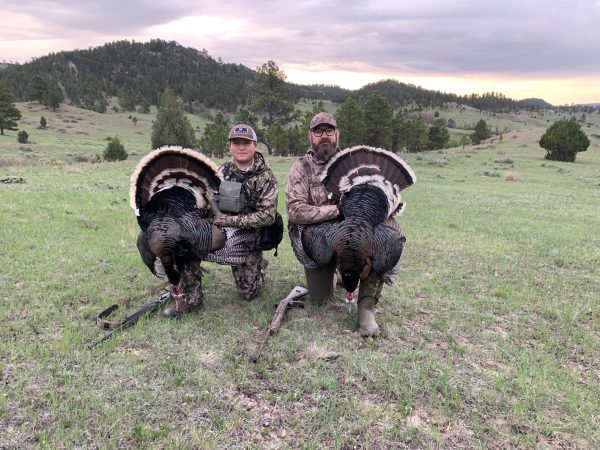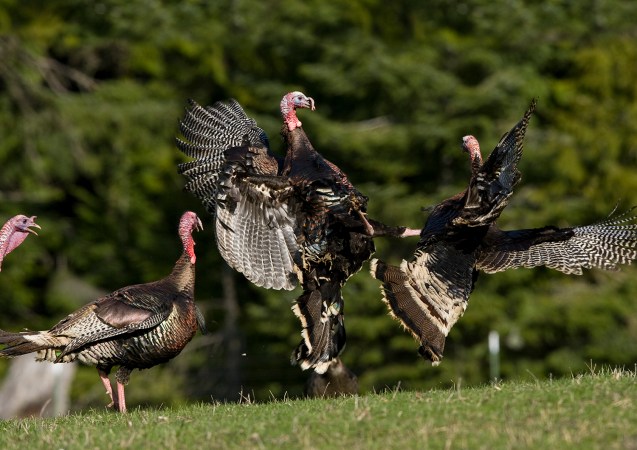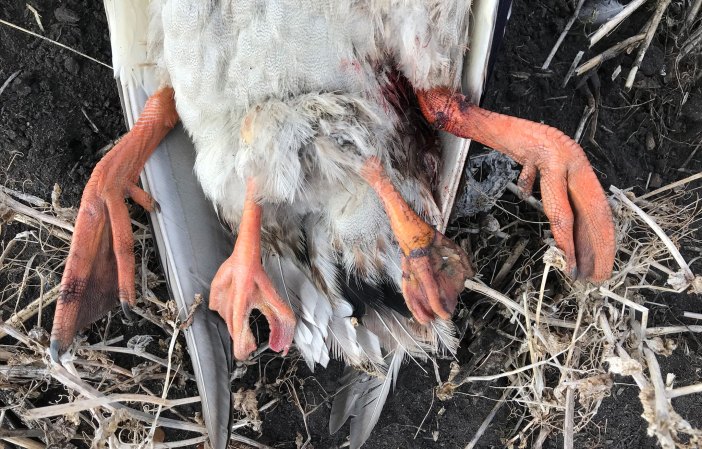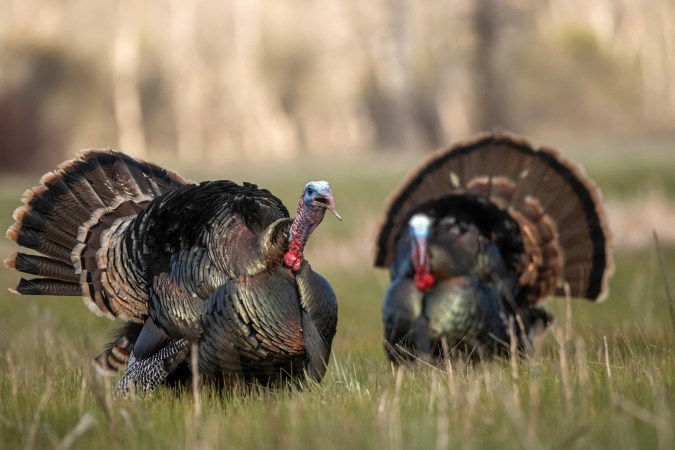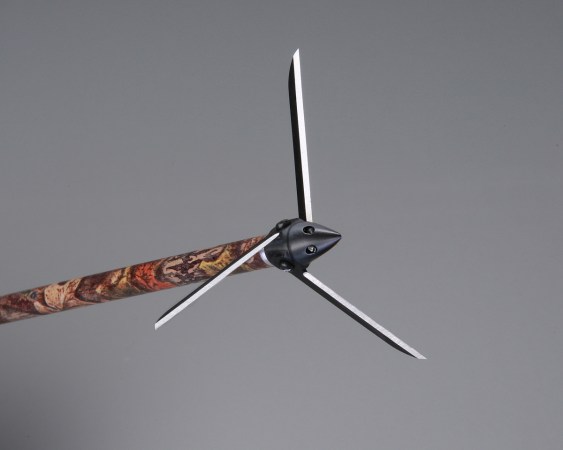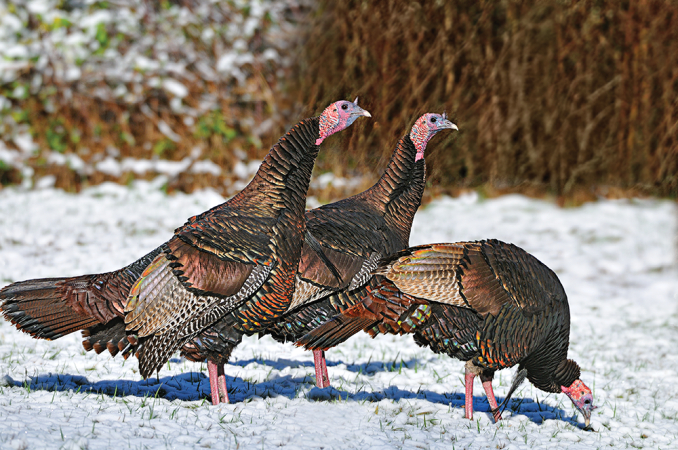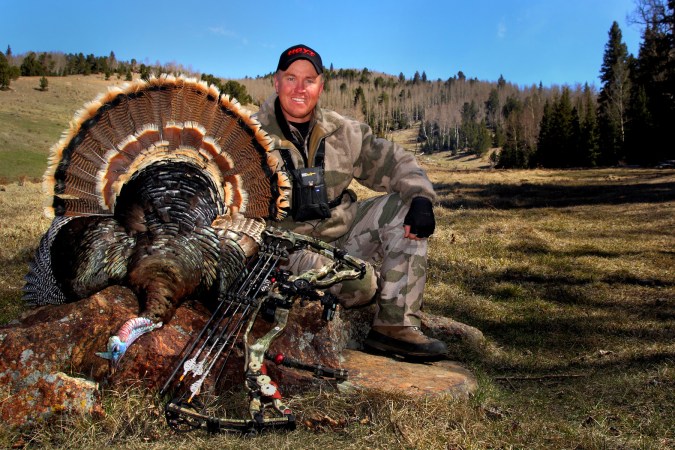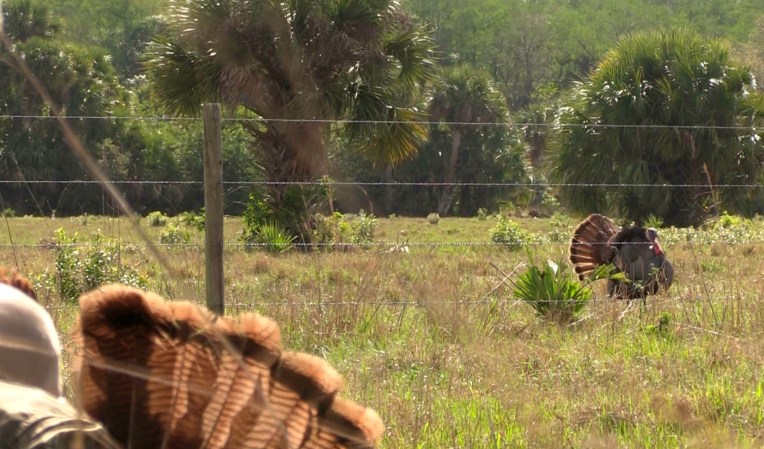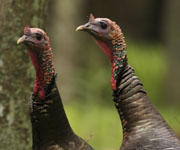As turkey season gets into full swing, a few oddball birds are starting to show up on our newsfeeds. From leucistic toms to turkeys with seven beards, these out-of-the-norm gobblers are making hunters do a double take. We asked a turkey biologist to explain what’s going on with the feet and legs of two separate turkeys: one with unusually pale legs and stumpy spurs, and one that’s been walking around on long, corkscrewed toenails.
Light Legs and Short Spurs
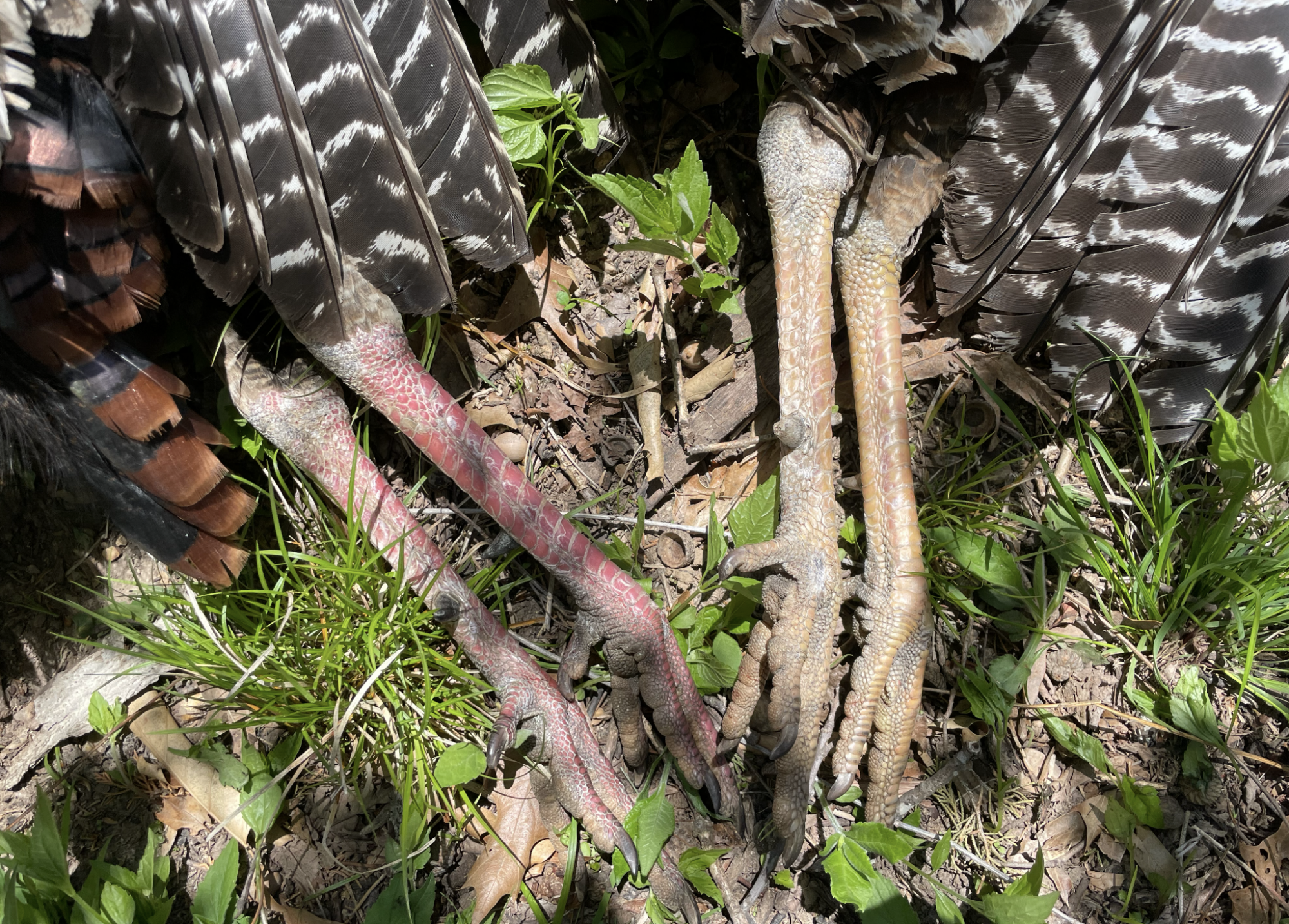
Missouri turkey hunter Robert Krebs tagged this mature tom in Missouri on April 17. But after taking in the turkey’s 11 1/2-inch beard, he and his buddies noticed something strange about the turkey’s legs. They were extremely pale, especially when compared to the normal reddish legs of the other turkeys hanging in camp. The spurs were also short and somewhat decrepit (“rotted,” as one hunter put it). The longbeard weighed 19 pounds, or 3 to 4 pounds less than the longbeards tagged on nearby farms.
Is this turkey just an old man falling apart at the seams? Or is something else amiss?
“It appears that there’s probably a pigment issue,” says Cody Cedotal, the wild turkey program manager for the Louisiana Department of Fish and Wildlife. “They’re definitely a lighter color. You see a lot of color variations in critters, whether they’re melanistic phases or other [oddities].”
Turkeys can inherit albinism or leucism. Albinism is a complete lack of pigment in the body, which causes the bird to have shock-white feathers, white legs, and a white-pink head. Leucism means the turkey has a partial loss of pigment, so it might have white feathers with a blue and red head, or only partially white feathers. In this case, the turkey’s feathers were normal, but the legs were really light in color.
With the long beard this turkey was sporting, it’s safe to say this tom was on the older side. But both spurs were less than an inch long, and one looks like it has seen better days. Cedotal explains that most variations in spurs are injury-related, whether they occur during a fight or from accidentally kicking a rock. Spurs are comprised of a keratin sheath atop a bony structure, so the sheath, the bone, or both could be damaged. Such trauma could result in the spurs being stunted for the remainder of a turkey’s life, he says, but even long, healthy spurs aren’t a good indicator of age.
The Turkey with the Curly Toenails
Another gnarly-looking set of turkey feet hit the Internet on April 19 when the National Wild Turkey Federation reposted a photo from turkey hunter Joe Harvey. (Harvey indicated in a comment on the post that his son, Guy, actually tagged the bird and is the one in the photo. They were in Chesterfield County, Virginia at the time.)
The bird’s legs are a normal color, and the spurs are long and healthy looking, but the toenails are something else entirely. They vary in length, but five of the six toenails are clearly abnormal: four are long and curly and the middle right toenail appears entirely absent. Even the far-left toe, the most normal of them all, is a bit on the long side.
Cedotal chalks this up to the turkey’s nails not growing in a natural direction.
“Just like a dog, or anything else, animals wear their toenails down just by walking, moving, and scratching. But for whatever reason, this particular bird just never did that,” he says. “You see how the toenails curve up immediately? That’s probably why they haven’t worn down like a normal bird’s would. They usually come straight out the foot and curl downwards, where they wear off. You can see how the middle toe without the toenail is actually curled upwards itself. That’s probably just the [result] of it not wearing off and [the turkey] having to walk like that.”
And while logic might say that the impressive spurs on this tom mean the bird is on the older side, Cedotal reminds us that spur length is not a reliable indicator of age.
Read Next: Why Are Turkey Populations Declining?
“Different birds grow spurs differently,” he says. “Sometimes what people would call a two-year-old turkey would have a 3/4-inch spur. But other times I’ve seen turkeys [with] maybe an inch-long, sharp, pointy spur that we would call a three- or four-year-old turkey, but we have banding data that says that turkey is eight or nine years old. The older the turkeys get, the spurs become much less reliable. I’ve seen adults killed with little half-inch bumps.”

